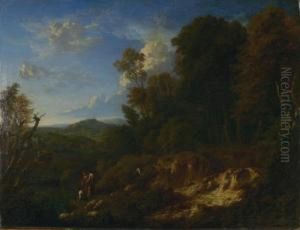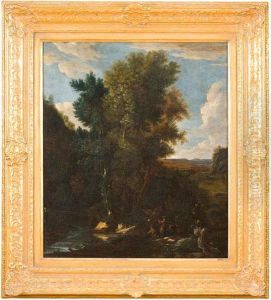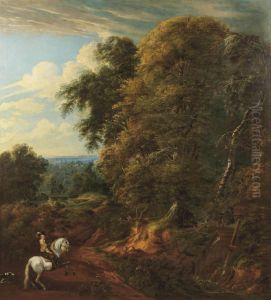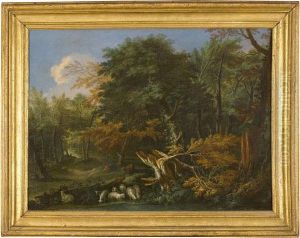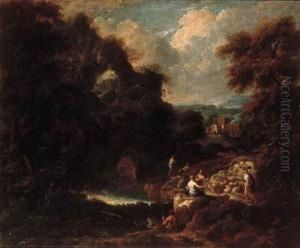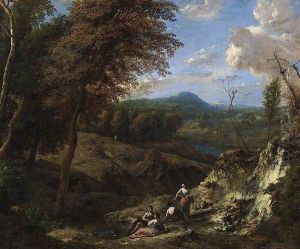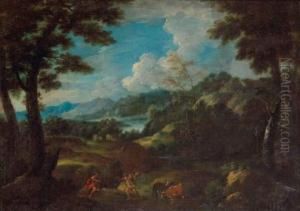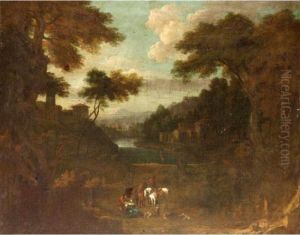Cornelis Huysmans Paintings
Cornelis Huysmans, also known as Cornelius Huysmans or Huijsmans, was a Flemish painter who specialized in landscapes. He was born in Antwerp, in the Spanish Netherlands (present-day Belgium), in 1648. His work is characterized by a lush, romantic rendering of the rural countryside, often featuring wooded landscapes with travelers and shepherds.
Huysmans was influenced by the works of other Flemish and Dutch landscape painters of the 17th century, such as Jacob van Ruisdael. He is known for his ability to depict light and atmosphere, a skill that adds a sense of realism to his bucolic scenes. Despite being born in Antwerp, he spent a significant part of his career working in Mechelen, where he became a master in the local Guild of St. Luke by 1676.
Throughout his career, Huysmans developed a distinctive style that made his works sought after by patrons and collectors. He painted various types of landscapes, including forest scenes, dunes, and river valleys, often populated with small figures to give a sense of scale and life. His palette included rich greens and earth tones, contributing to the vibrant yet harmonious feel of his paintings.
Cornelis Huysmans' work was popular in his own time, and he received commissions from distinguished patrons. His influence extended beyond his lifetime, with his paintings becoming part of collections across Europe. Huysmans passed away in Mechelen in 1727. Today, his artworks can be found in numerous museums, and he is regarded as an important figure in the development of landscape painting in the Flemish tradition.
















